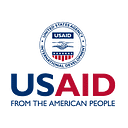How Incentives for Financial Institutions Reduce Risks and Increase Lending to Small Businesses in Remote Regions of Peru’s Amazonia
USAID CATALYZE Peru increases small- and medium-sized enterprises (SMEs) and producer associations’ access to finance through an innovative Pay for Results (P4R) program, which helps financial institutions (FI) minimize their risk in lending while growing their portfolios in underserved regions in the Amazon. CATALYZE Peru has signed P4R agreements with 10 FIs, which have committed to mobilize USD24.1 million to the Amazonia region.
Among those institutions is Caja Huancayo, one of the first FIs to join CATALYZE Peru’s P4R’s Program, which is incentivizing the FI to mobilize USD2.9 million across eight regions in Amazonia, including the Junín region. The Junín region sits in the central Peruvian jungle and is part of the Apurímac, Ene, and Mantaro River Valley (VRAEM), one of the most conflict-ridden and undeveloped areas of the country, with high poverty rates (31.4%) and poor communication services due to its difficult geographic access. The main economic activity is agriculture, with crops such as cocoa, coffee, pineapple, oranges, and coca leaves — m most of which are used for illicit purposes.
Caja Huancayo’s Chairman of the Board, Jorge Solís Espinoza, said the P4R initiative provides crucial capital to this remote community. “Because of the informal and unlawful activities in some cases, the Amazon can be somewhat risky for investments and financing,” said Espinoza. “However, we are now investing in this region with clients who work to improve the economy every day, and we are seeing positive results.”
One of those clients is Edith Poma, who owns a small bodega in the Nueva Esperanza community in Satipo, found in the Junín region. Poma recently obtained a loan to start a complementary business called KasNet. Poma said that “being able to access a loan is very important because without finance we cannot grow. It is necessary to continue implementing mechanisms that facilitate access to capital for entrepreneurs.”
KasNet is a local Peruvian network typically found at small, independent stores that allows customers to pay bills and perform basic financial services in areas where there are no banks.
“Now we want to set up a ‘KasNet’ agent. There are no banks or ATMs in our area, and I am sure we will have more clients with this service,” Poma said. “Nueva Esperanza is a populated center, located about 45 minutes from the center of the city, so providing a multi-bank agent service will be very much appreciated.”
Poma’s business income is expected to increase by 5 to 10% in the short term and will soon generate employment as she now requires one or two assistants to help serve her customers.
CATALYZE Peru works closely with FIs to mobilize capital for SMEs. Increasing financing in the Peruvian Amazon strengthens the licit economy and generates high economic and social impact, while simultaneously protecting the rich biodiversity of the Amazon.
About CATALYZE
USAID CATALYZE, implemented by Palladium, is an 8-year program designed to mobilize $2 billion in private capital for development impact, especially in underserved social sectors and frontier markets across the globe. CATALYZE supports blended finance solutions working with local and international businesses and investors to explore and find commercially-viable opportunities and approaches to creating jobs, developing sustainable social services, tightening and rationalizing supply chains, and advancing inclusive growth. We work across 27 countries in Asia, Africa, Europe, Latin America, and the Caribbean, with 190 partners, including financial institutions, business advisory service providers, anchor firms, and job trainers.
